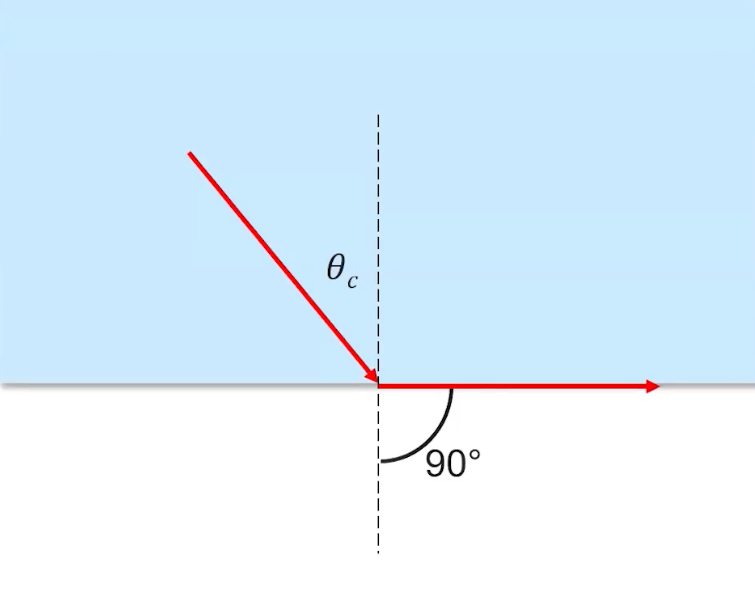Refraction is essentially the change in direction (bending) of light as it passes from one medium to another. It occurs for all kinds of waves, especially light and sound. It occurs because the velocity of the wave is different in different media. Just like images are formed through reflection, images are also formed by refraction which is when light passes through a lens.
Snell’s Law
Similar to reflection, there are both incident angles and refraction angles. Both are measured from a line normal to the new medium. The relationship between these angles is described by Snell’s Law: where:
- and correspond with the angle of incidence and angle of refraction respectively
- and correspond with the index of refraction for each medium (the original and the new)
The index of refraction is specific to each medium. For example, the index of refraction for water is 1.33. The larger the index of refraction, the smaller the angle will be relative to the normal.
Linearizing Snell’s Law
Typically, given two media, we would attempt multiple different incident and refraction angles to get a more accurate form of the indices. Ultimately, to synthesize this data and to extract the indices, we would have to form a linear equation where the slope represents .
There’s many approaches to do this, but one is:
Speed of Light
We can also calculate the index of a medium by using the speed of light: where:
- is the index of refraction in the specific medium
- is , which is the speed of light in a vacuum
- Is the speed of light in that specific medium
Nothing can go faster than , so if we ever have a velocity greater than . Because of this, we can modify the linear equation and we will realize that has to always be greater than 1, because otherwise given .
Reflection and Refraction
It’s possible to have a situation where all light is reflected and no light is refracted.
Total Internal Reflection is when all light is reflected and no light is refracted. It occurs when the second medium has a lower index of refraction than the first, and the refraction angle is greater than 90°.
The Critical Angle ( ) is the maximum angle of incidence for which any light can be refracted into the new medium. This is when the refraction angle is equal to 90°. It can be found by setting the angle of refraction equal to 90 degrees in Snell’s Law:
